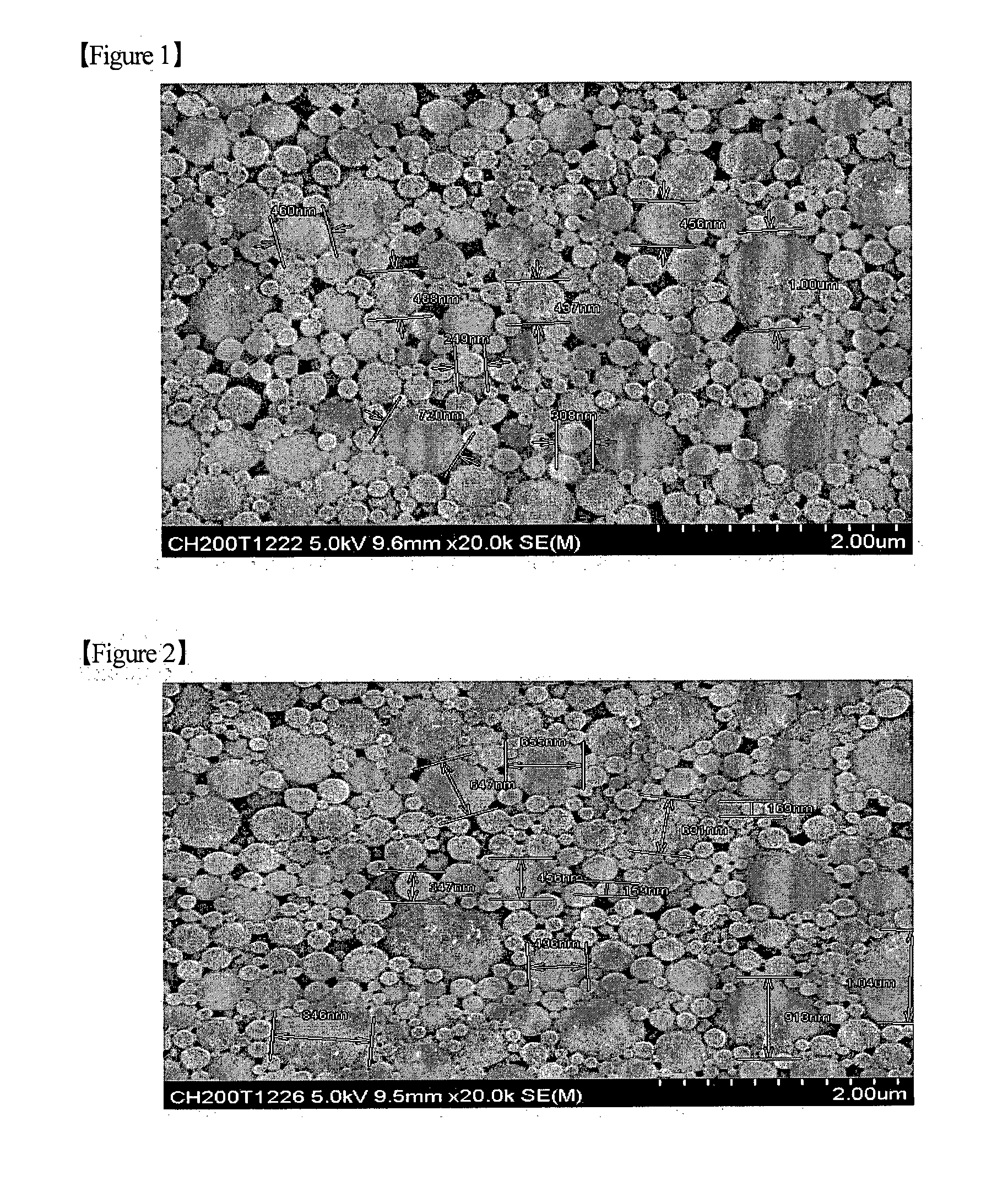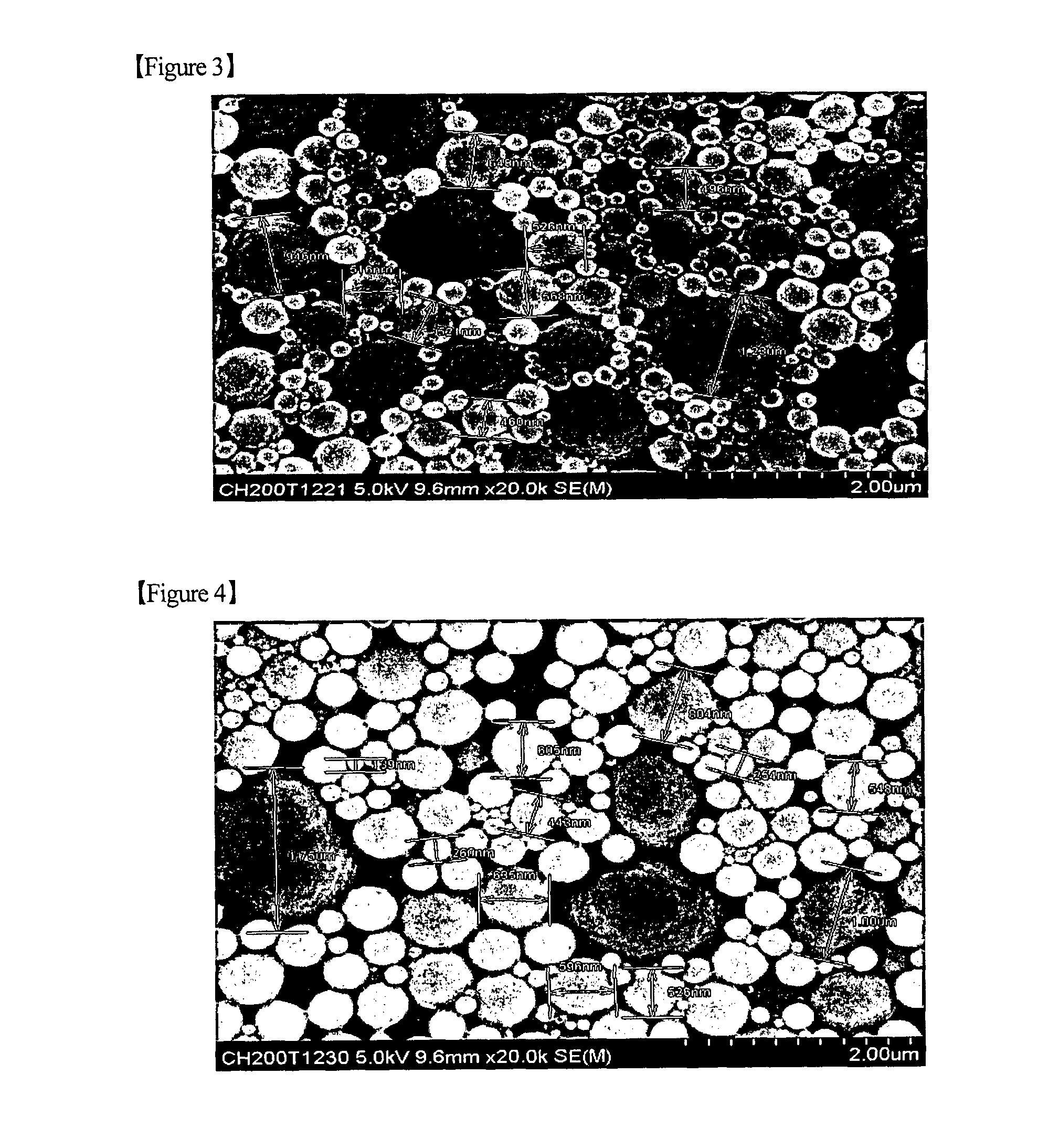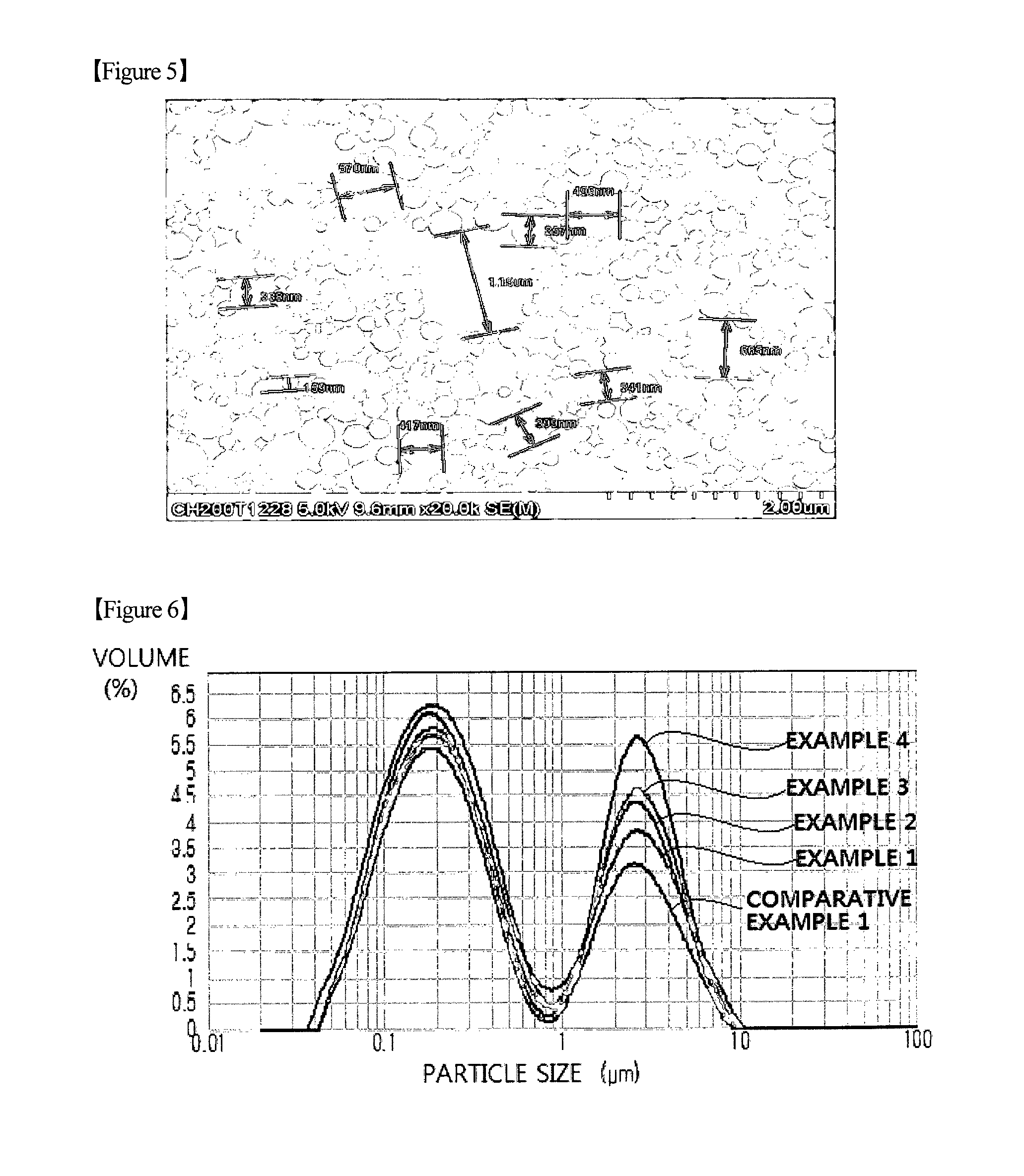Polyvinyl chloride resin and method of preparing the same
- Summary
- Abstract
- Description
- Claims
- Application Information
AI Technical Summary
Benefits of technology
Problems solved by technology
Method used
Image
Examples
example 1
[0064]In 54 kg of deionized water were dissolved 0.72 kg of the sodium dodecyl benzene sulfonate (anionic surfactant) and 0.63 kg of cetyl alcohol (nonionic surfactant), both as emulsifying agents, and 0.2 kg of sodium phosphate as a buffering agent. In the resulting solution, 40 g of di-3-methoxybutylperoxy dicarbonate as a polymerization initiator, 20 g of diallyl phthalate as a polymerization degree improver, 50 kg of a vinyl chloride monomer and 3 kg of a vinyl chloride acetate monomer were dispersed for 20 min using a centrifugal pump, and the dispersion was introduced into a 200 L reactor where a polymerization reaction then occurred at 49° C. It took 460 min to complete the polymerization reaction.
[0065]After completion of the reaction, a polyvinyl chloride resin latex sample was withdrawn for use in measuring particle diameters, and 5 kg of the polyvinyl chloride resin latex thus obtained was spray-dried to obtain 2 kg of a powdered polyvinyl chloride resin.
example 2
[0066]A polyvinyl chloride resin was obtained in the same manner as in Example 1, except that 0.64 kg of sodium dodecyl benzene sulfonate and 0.56 kg of cetyl alcohol were used. Here, it took 455 min to complete the polymerization reaction.
example 3
[0067]A polyvinyl chloride resin was obtained in the same manner as in Example 1, except that 0.56 kg of sodium dodecyl benzene sulfonate and 0.49 kg of cetyl alcohol were used. Here, it took 465 min to complete the polymerization reaction.
PUM
| Property | Measurement | Unit |
|---|---|---|
| Percent by mass | aaaaa | aaaaa |
| Percent by mass | aaaaa | aaaaa |
| Percent by mass | aaaaa | aaaaa |
Abstract
Description
Claims
Application Information
 Login to View More
Login to View More - R&D
- Intellectual Property
- Life Sciences
- Materials
- Tech Scout
- Unparalleled Data Quality
- Higher Quality Content
- 60% Fewer Hallucinations
Browse by: Latest US Patents, China's latest patents, Technical Efficacy Thesaurus, Application Domain, Technology Topic, Popular Technical Reports.
© 2025 PatSnap. All rights reserved.Legal|Privacy policy|Modern Slavery Act Transparency Statement|Sitemap|About US| Contact US: help@patsnap.com



